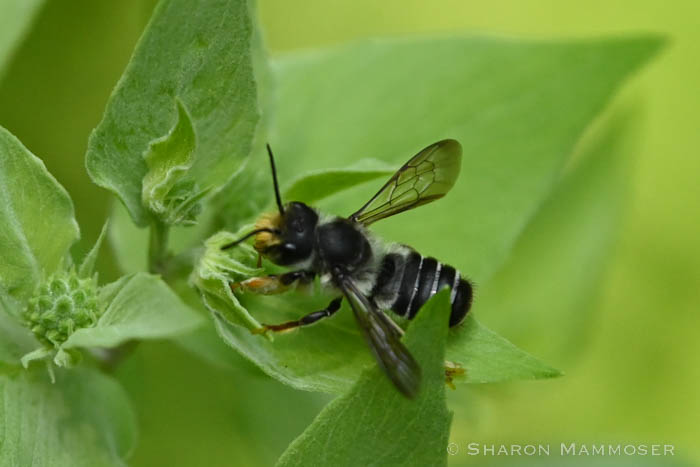I’m going to tell you a funny story about puzzler number 266. Usually when I choose something for my weekly puzzler, I know what it is. This makes sense, right? But every once in a while, I think I know, or sometimes I’m not sure but I’m confident I can do research before the following week to learn the answer. So far this has worked for me all of these years.
Puzzler 266 was a bunch of photos, all showing leaves with holes in them. Here they are again to remind you since it’s been a few weeks:
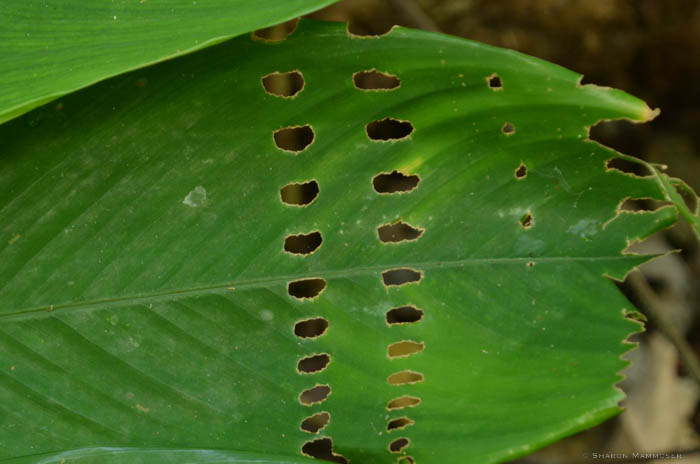
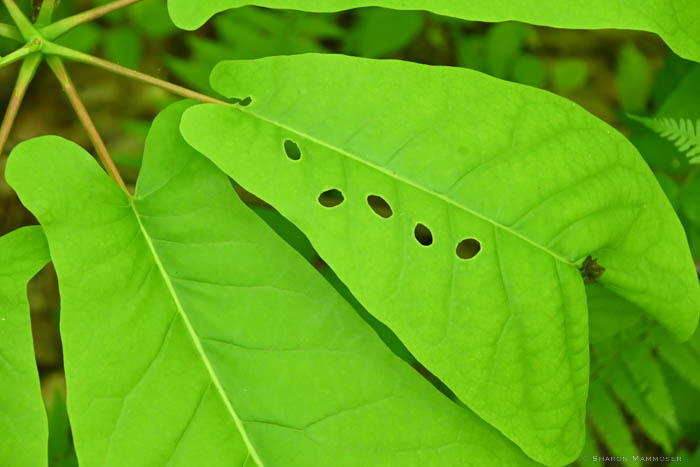
At the time of its publication, I suspected that these holes were the work of leaf cutter bees. Have you heard of these? Leafcutter bees use their jaws to cut holes in leaves, then take these back to their homes, basically wallpapering their nests with these leaves, or sometimes petals. When I first saw these uniform holes I thought, “Oh, this must be the work of leafcutter bees.” I have been reading about native bees this summer, learning their habitats and reading a great field guide called The Bees in Your Backyard. But guess what? When I went to answer the puzzler, doing some research, I learned that no, this is not the work of leaf cutter bees! In fact, my puzzler featured TWO different puzzlers because these holes in the leaves in my photos were caused by two different animals, and neither is a leaf cutter bee!
The photos from holes in Cana lily leaves, which consisted of all of my photos except one–are from a kind of caterpillar called a Lesser Canna leafroller, (Geshna cannalis) or the Larger Canna Leafroller, (Callpodes ethlius) that lives in the long leaf tunnel, feeding safe from view inside this tunnel. When eventually the leaf unfurls, it has uniform holes in it where the caterpillar fed.
The other photo is of holes in a magnolia leaf and amazingly– I don’t know what made these holes! More research is needed. If you know, please do use the reply box at the end of the puzzler! This one for now will remain a puzzler.
So I must apologize for the very difficult–really impossible–puzzler. And want you to know that what this shows is that I am learning right along with you! As a naturalist I’m expected to know about butterflies, moths, beetles, bugs, spiders, snakes, salamanders, frogs, toads, trees, flowers, fungi, crayfish, millipede, centipedes, lizards, birds, bees, deer, rabbits, fox, squirrels, and on and on and on.
What every naturalist I know, knows, is that the more you know,
the more you realize you need to know!
Here are some photos of what the leaf cutter bee evidence looks like. The holes they make are half-moon shapes, at the edges of petals or leaves, like on this redbud leaf.
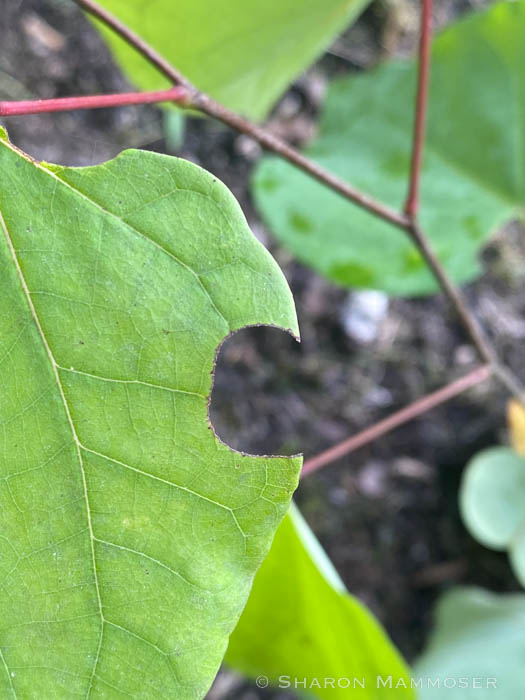
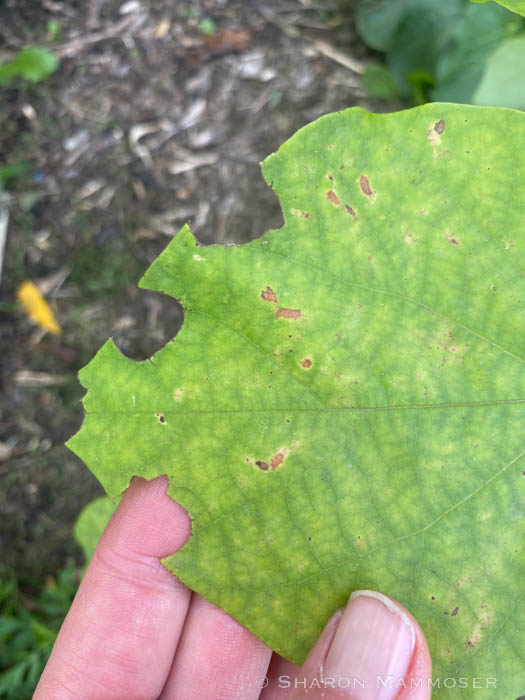
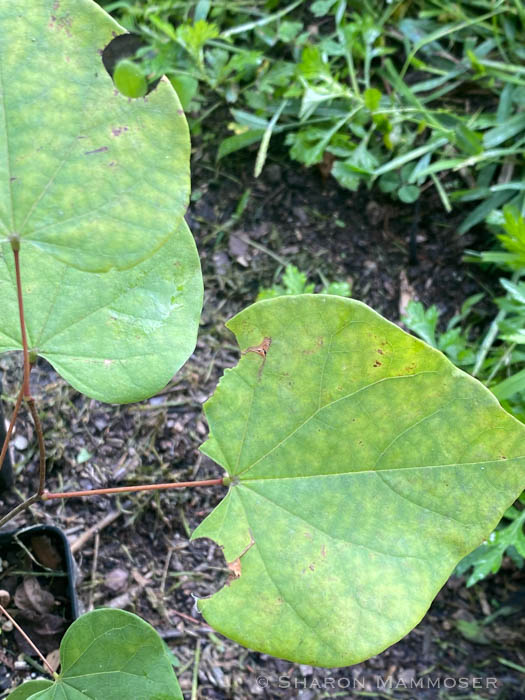
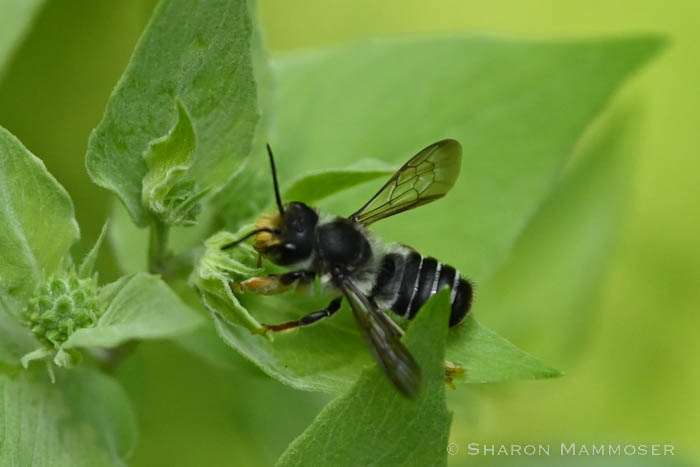
Now since we’re doing holes, let’s continue the theme for this week’s puzzler and do another hole–this one in sand. See if you recognize these holes and know what made them.


